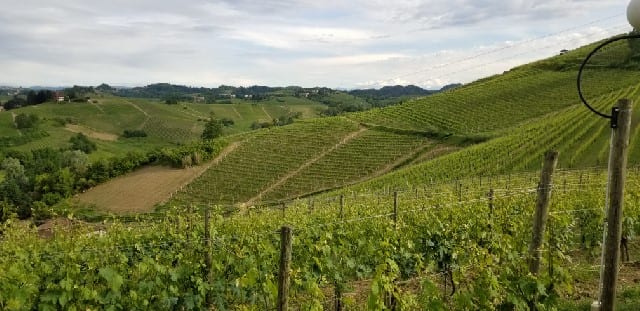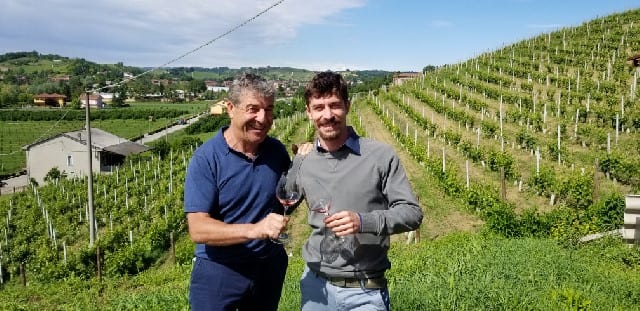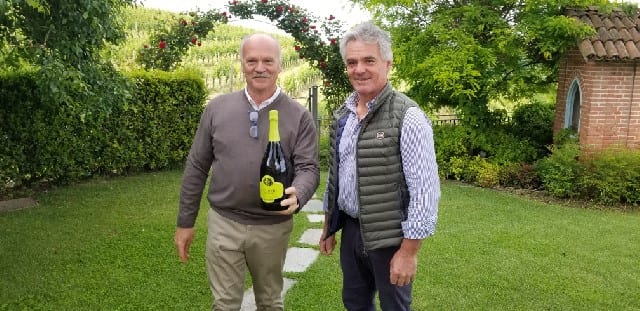

04 Sep Roero – A Hidden Gem in Italy
When you think about wines from Piemonte, Italy, you probably think about Barolo or Barbaresco. But, on a recent trip to Piemonte, I spent a few days in the hilly region of Roero enjoying the Nebbiolos and Arneis wines produced there. This is truly a hidden gem of a region as I wrote in my column in the Napa Valley Register which you can read below. Roero is a hidden gem located in Piemonte, Italy. It is not Barolo. It is not Barbaresco. It is not even Nebbiolo Langhe. Roero, a hilly region located north of Alba in the northeast corner of the province of Cuneo, has its own distinctiveness and elegance.







- Roero Arneis Merica 2017 – Aged in stainless steel vats for nine months, this wine is about freshness. With aromas of white and yellow flowers and minerals, the wine has bright, intense acidity that fills the palate and makes your mouth water on the finish.
- Roero Monpissano Riserva 2015, Canale d’Alba – Coming from one of the most renowned single vineyards of Roero, Monpissano is located on a hill with southern exposure and calcareous and clay soils. This Nebbiolo is fermented in stainless steel and then aged in big Slavonian barrels and has notes of rose, lavender, cherry and spice with integrated tannins. We also tasted the 2007 Monpissano Riserva and with almost 10 years of age on it, the wine, with aromas of dried flowers and lavender, still has a lot of tannin.




- Cornarea Roero Arneis 2017 – Their philosophy is to “preserve Arneis’ taste,” according to Piero Bovone. To achieve this, they do anaerobic vinification using natural yeasts, followed by Champagne yeasts to finish, as they are the only yeasts in the world that do not need oxygen. The wine is not clarified. The resulting wine is aromatic with floral, mineral, stone fruit and citrus notes. On the palate, the wine is fresh with soft acidity, sapidity and a long finish.
- Cornarea Enritard 2014 – This wine spends two years in stainless steel. This wine is more about minerality and less about fruit. It has soft acidity and is a more food friendly wine.
- Cornarea 2010 Roero Arneis – Arneis is thought of as a young wine but has aging potential. There is a good amount of magnesium in the wine, which adds to both the minerality and to the aging of the wine. With more than seven years of age, this white wine has aromas of citrus, peaches, stones and minerals, with a hint of petrol.
- Cornarea Tarasco Passito 2013 – A passito made from Arneis, this wine was originally an accident when, in 1982, Piero Sr. left grapes out for a visiting journalist who never came. He forgot about the grapes that turned to raisins so he made a passito wine. Today, the grapes, which have a little botrytis, are kept in the cellar for three months before pressing and then placed in old barriques for four years, allowing natural evaporation. The resulting wine is oxidized with notes of honey, stone fruit and nuts.




- Malvira Rive Gauche Sparkling Arneis – Made from 100 percent Arneis, the wine is fermented and matured in stainless steel for six months and after it undergoes the Charmat method, it spends four months on the yeasts. The wine is slightly herbaceous with notes of white peach and flowers and on the palate, it is vibrant.
- Malvira Roero Arneis 2015 Vigna Renesio – A single vineyard wine of the same name, the wine is aged in stainless steel for seven months and the resulting wine is bright and fresh with stone fruit notes.
- Malvira Roero 2009 Mombeltramo Riserva – This 100 percent Nebbiolo wine comes from a single vineyard on the west side of Canale where there is sandy soil. The wine has aromas of dried flowers and violets and is elegant with medium tannins.
Discover more from Please The Palate
Subscribe to get the latest posts sent to your email.


